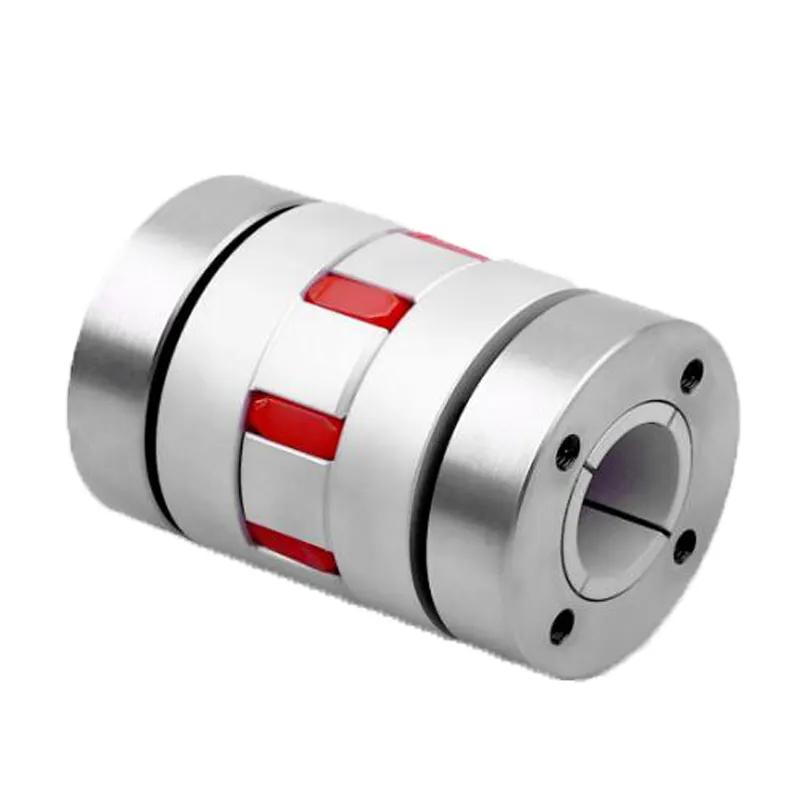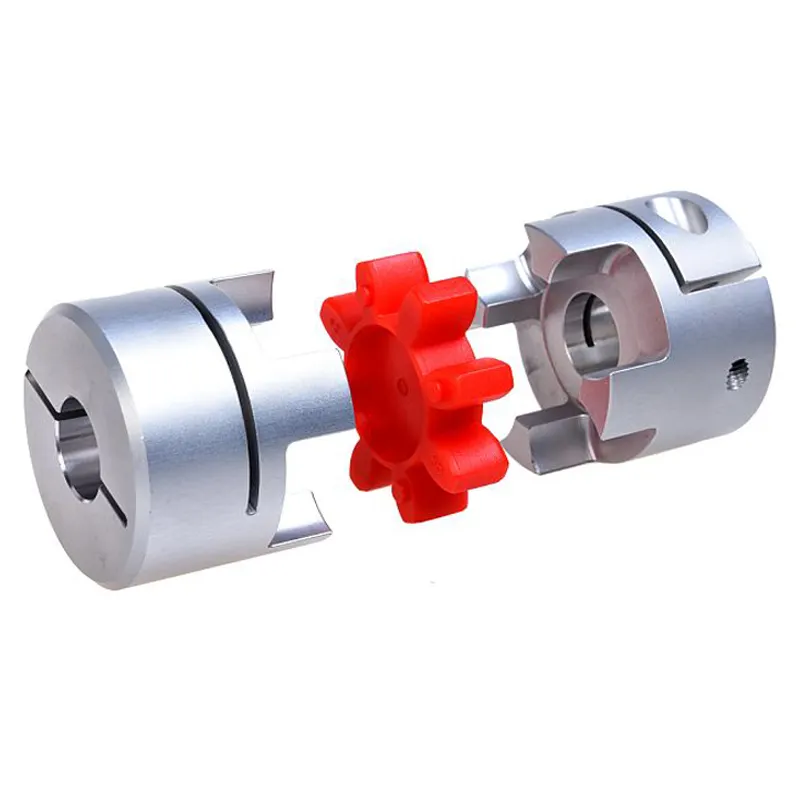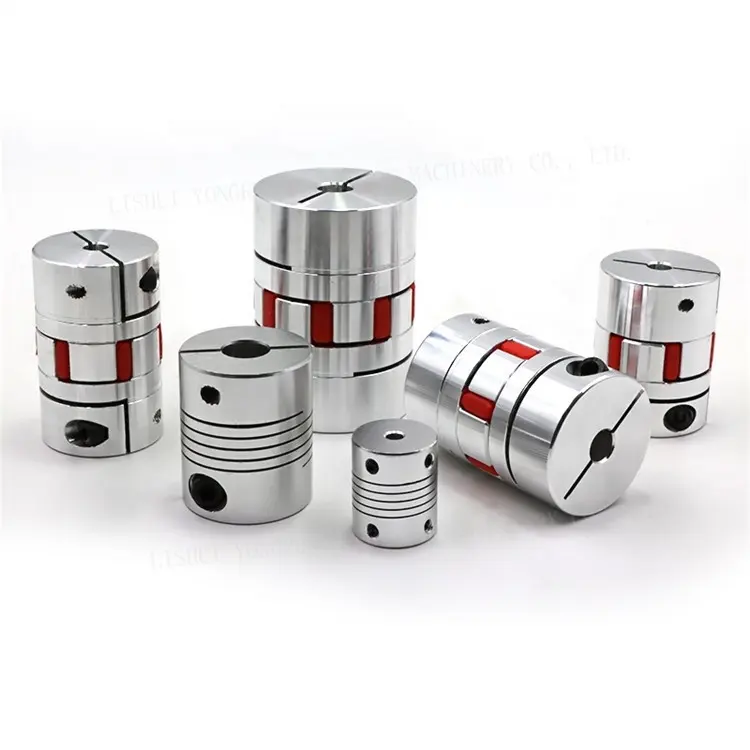Product Description
Sintered Iron Jaw Coupling Hubs Flexible Jaw Coupling Rubber Spider Coupler Powder Metallurgy Jaw Coupler
Product Description
Name: Powder metallurgy/L type claw coupling
Material: Powder metallurgy (pig iron) 45 steel aluminum alloy optional
Material: The rubber pad material is NBR (nitrile rubber)
The L-shaped claw coupling is similar to the plum CHINAMFG coupling and is cast from powder metallurgy material. It has the characteristics of economy, practicality, easy disassembly, light weight, high torque, and wear resistance.
1. L-shaped 3 jaw coupling (powder metallurgy coupling), powder metallurgy is a process technology that produces metal materials, composites, and various types of products by using metal powder (or a mixture of metal powder and non-metal powder) as raw materials, forming and sintering.
2. The powder metallurgy coupling strengthens the connection between the teeth and the main body, making the teeth of the coupling less prone to breakage, more durable, and with a longer service life. The later stage adopts phosphating treatment, which has a beautiful appearance.
3. The rubber pad of L-type 3 jaw coupling is made of NBR (nitrile rubber), which is mainly produced by low-temperature lotion polymerization. It has excellent oil resistance, high wear resistance, good heat resistance, strong adhesion and other characteristics.
Powder metallurgy is an important process for manufacturing high-tech materials. It combines material equipment with metal forming technology to form a special metal forming technology for manufacturing machinery and electrical parts, which is precise, efficient, low consumption, energy-saving, and inexpensive. It is widely used in fields such as automobiles, motorcycles, household appliances, office machinery, agricultural machinery, engineering machinery, and electric tools.
L-type coupling models include L-035 L-050 L-070 L-075 L-090 L-095 L-099 L-100 L-110 L-150
L-type couplings are used in the mechanical field: hydraulic pumps, centrifugal pumps, small generators, blowers, fans, ventilators, belt conveyors, screw conveyors, thin plate bending machines, woodworking machinery, grinders, textile machines, similar machines, cutting machines, winches, generators, cement mixers, cable cars, cable winches, centrifuges, excavators, piston pumps, packers, paper making machinery, compressors, screw pump shearing machines, forging machines, stone crushers, piston compressors, vertical roller presses, welding machines, tribute plastic crushers.
Detailed Photos
Cast lron Jaw Coupling Hubs can help connect shafts together for heavy shock loads in variable-speed andvariable-torque applications. A complete assembly requires 2 hubs and 1 jaw coupling spider, available separately. Nitrile Butadiene Rubber and polyurethane rubber are available to choose.Our company's powder metallurgy L coupling is include: L035 series, L050 series, L070 series, L075 series, L090 series, L095 series, L099 series, L100 series, L110 series, L150 series. Its product features are economical, convenient and light weight. Without lubrication, the products are exported to more than 40 countries. Rubber gaskets are made of high quality rubber products, oil resistant and friction resistant. Our company also contracts for powder metallurgy and other products.
Service tenet: user satisfaction, quality assurance, integrity cooperation
Product Parameters
Packaging & Shipping
After Sales Service
Service tenet: user satisfaction, quality assurance, integrity cooperation
/* March 10, 2571 17:59:20 */!function(){function s(e,r){var a,o={};try{e&&e.split(",").forEach(function(e,t){e&&(a=e.match(/(.*?):(.*)$/))&&1

Differences between Elastomer and Metallic Jaw Coupling Designs
Jaw couplings are available in two primary designs: elastomer jaw couplings and metallic jaw couplings. Each design has its own set of characteristics and advantages:
- Elastomer Jaw Couplings: Elastomer jaw couplings, also known as flexible jaw couplings, feature an elastomeric spider element that sits between the two hubs. This spider element is typically made of materials like polyurethane, rubber, or other flexible polymers. The elastomeric material provides the coupling with flexibility, allowing it to compensate for shaft misalignment, angular, parallel, and axial, as well as dampen vibrations and shocks. Elastomer jaw couplings are popular for their ability to protect connected equipment from mechanical stresses and enhance overall system performance. They are commonly used in applications where some misalignment is expected or in systems with shock loads and vibrations. Additionally, elastomer jaw couplings are known for their relatively lower cost compared to metallic designs.
- Metallic Jaw Couplings: Metallic jaw couplings, also known as rigid jaw couplings, are constructed entirely from metal, usually steel or aluminum. Unlike elastomer couplings, metallic jaw couplings do not have an elastomeric spider element and offer a more rigid connection between the two hubs. As a result, they are less forgiving of misalignment and do not provide the same level of vibration dampening as elastomer couplings. However, metallic jaw couplings offer higher torque capacity and are better suited for applications where precise shaft alignment is critical. They are commonly used in systems that require high torque transmission and minimal torsional flexibility. Additionally, metallic jaw couplings are well-suited for environments with high temperatures or exposure to chemicals, as they can withstand harsher conditions compared to elastomer designs.
The choice between elastomer and metallic jaw couplings depends on the specific requirements of the application. If flexibility, misalignment compensation, and vibration dampening are crucial, elastomer jaw couplings are preferred. On the other hand, when high torque transmission, precise alignment, and durability in challenging environments are needed, metallic jaw couplings are the better option.

How does a jaw coupling help in torque and rotational speed control?
A jaw coupling plays a vital role in torque and rotational speed control by facilitating efficient power transmission while compensating for misalignments and dampening vibrations. Here's how a jaw coupling helps in achieving torque and rotational speed control:
- Torque Transmission: Jaw couplings are designed to transmit torque between two shafts with minimal power loss. The elastomer spider, which acts as the flexible element between the two coupling hubs, efficiently transfers torque from one shaft to the other. This precise torque transmission is essential in maintaining consistent rotational motion and controlling the speed of the driven equipment.
- Misalignment Compensation: In rotating machinery, misalignments between the motor and driven equipment are common due to factors like installation errors, thermal expansion, or shaft deflection. Jaw couplings can handle both angular and parallel misalignments. By accommodating these misalignments, jaw couplings ensure smooth operation and prevent unnecessary stress on the equipment, thus contributing to torque and rotational speed control.
- Vibration Damping: Vibrations are an inherent characteristic of rotating machinery and can affect torque and rotational speed stability. The elastomer spider in the jaw coupling acts as a damping element, absorbing and dissipating vibrations. This vibration damping capability reduces the risk of speed fluctuations and enhances overall system stability during operation.
- Start-Up and Overload Protection: During start-up or when the driven equipment experiences sudden overload conditions, there may be spikes in torque and rotational speed. Jaw couplings, with their torsional flexibility, can absorb these sudden torque variations, protecting the equipment from damage and providing smoother start-up and operation.
The combination of precise torque transmission, misalignment compensation, vibration damping, and overload protection makes jaw couplings effective in achieving torque and rotational speed control. However, it is essential to choose the appropriate jaw coupling size and material for the specific application to ensure optimal performance and reliability.
For applications that require even higher torque capacity or stricter speed control, specialized coupling types like gear couplings or servo couplings may be more suitable. These couplings offer advanced features for precision motion control and torque transmission in more demanding applications.

Use of Jaw Couplings in Various Industries for Power Transmission
Jaw couplings are widely used in different industries for power transmission due to their many advantages, including their ability to handle misalignment, shock loads, and vibrations. Some of the industries that commonly use jaw couplings include:
- Manufacturing: Jaw couplings are extensively used in manufacturing machinery such as conveyors, mixers, and packaging equipment.
- Automotive: In the automotive industry, jaw couplings are employed in various applications, including engine-driven accessories and conveyor systems in assembly lines.
- Agriculture: Farming equipment, such as tractors and harvesting machines, often use jaw couplings to transmit power from the engine to different attachments.
- Material Handling: Jaw couplings are found in material handling equipment like forklifts, cranes, and hoists.
- Water and Wastewater: Pumps and compressors used in water and wastewater treatment plants frequently utilize jaw couplings for power transmission.
- Food and Beverage: Jaw couplings are used in food processing machinery where cleanliness, reliability, and flexibility are essential.
- Textile: Textile manufacturing equipment, such as looms and spinning machines, often use jaw couplings to transmit power from motors to various components.
- Packaging: Packaging machines and equipment benefit from jaw couplings' ability to absorb shocks and vibrations.
- Printing: Printing presses and related machinery commonly use jaw couplings for their precise power transmission.
These are just a few examples, but jaw couplings are found in numerous other industries where power transmission and motion control are critical aspects of the equipment's operation. Their ease of installation, maintenance, and high-performance capabilities make them a popular choice for a wide range of applications.


editor by CX 2024-01-19
